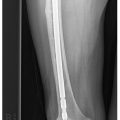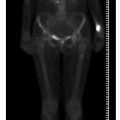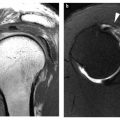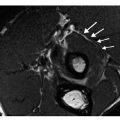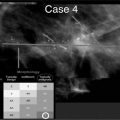Injury
Etiology
Characteristics
Imaging
• Hyperflexion sprain (anterior subluxation)
• “Whiplash”
• Injury to PLC
• Posterior anulus fibrosis may also be disrupted
• 50% show delayed instability
• Radiography: abrupt focal kyphosis at injury level
• MRI: increased T2 signal in PLC and posterior anulus injury
• Bilateral interfacetal dislocation (BID)
• Disruption of anterior longitudinal ligament, posterior longitudinal ligament, intervertebral disc and PLC
• Unstable with high risk of cord injury damage
• “Bilateral locked facets”
• Generally within low cervical spine
• Radiography: ≥50% anterior subluxation of vertebral body in complete dislocation; bilateral perched facets in partial facet joint displacement
• CT: detects subtle fractures; “inverted hamburger sign” of facet dislocation
• Simple wedge compression
• Compressive forces affecting anterior superior endplate of vertebral body
• Anterior longitudinal ligament and disc intact
• Deformity of anterior superior endplate of affected vertebrae
• Radiography: loss of vertebral height; impacted superior endplate; angulated anterior cortical margin of vertebral body
• Clay shoveler’s fracture
• Forced flexion of head and upper cervical spine
Downward traction on spinous processes by muscular attachments to scapulae while arms perform forceful lifting
• Avulsion fracture of C6, C7 or T1 spinous process
• Stable due to intact PLC
• Mimicked by unfused apophysis
• Radiography: shows avulsion fracture fragments
• Flexion teardrop fracture
• Severe flexion with disruption of all ligaments and their stability
• Unstable: worst cervical spine injury compatible with life
• Comminuted anterior inferior vertebral body fracture with triangular fragment
• Posterior vertebral body retropulses into spinal cord with resultant injury to spinal cord (many patients present with acute anterior cord syndrome)
• Radiography: visualize kyphosis, “teardrop” fragment, retropulsed bone and significant prevertebral soft tissue swelling
Table 2
Cervical spine: hyperflexion injuries with rotation
Injury | Etiology | Characteristics | Imaging |
|---|---|---|---|
• Unilateral interfacetal dislocation (UID) | • Mechanism similar to BID except accompanied by rotation | • Most common at C5-6 and C6-7 • Dislocation on opposite side of rotation • Disruption of PLC and articular joint capsule • 70% with impaction fracture • “Unilateral locked facet” when stable | • Radiography: •bowtie sign• • CT: required to detect subtle fractures |
Table 3
Cervical spine: vertical compression (axial load) injuries
Injury | Etiology | Characteristics | Imaging |
|---|---|---|---|
Jefferson fracture | • Force to top of skull, transmitted through occipital condyles to cervical spine at instant spine is straight | • Stability dependent on status of transverse ligament • Ring of C1 fractured anteriorly and posteriorly • Uni- or bilateral fractures • 50% associated with C2 fracture | • Radiography: displacement of lateral C1 borders off C2 superior articular facet in odontoid view • CT: multiple disruptions of atlas ring |
Burst fracture | • Nucleus pulposus protrudes into vertebral body causing vertebral body rupture | • Common at C3-7 levels, usually involving cord injury | • Radiography: vertical fracture line best seen on AP view • CT: evaluate fracture fragments • MRI: evaluate cord, disc, and ligaments |
Table 4
Cervical spine: hyperextension injuries
Injury | Etiology | Characteristics | Imaging |
|---|---|---|---|
Hangman’s fracture (“traumatic spondylolisthesis of axis”) | • Most common fracture in fatal auto accidents | • Bilateral fracture of C2 arch • Neurologic involvement rare • May involve transverse foramina • Effendi classification | • Radiography: shows extent of anterior dislocation and involvement of transverse foramina • CT: fracture lines and displacement |
• Hyperextension dislocation | • Direct blow to forehead or “whiplash” | • Unstable with significant soft tissue injury and ligament disruption • Common in low cervical spne • Paralysis, acute central cervical cord syndrome | • Radiography: “normal” but with prevertebral soft tissue swelling and ant. widening of disc space • MRI: evaluate cord, soft tissues, and ligaments |
Anterior arch avulsion of atlas | • Hyperextension | • Site at middle or inferior anterior arch of CI • At attachments of longus colli muscles or atlantoaxial ligaments | • Radiography: prevertebral soft tissue swelling; facture line seen in odontoid view |
Posterior arch atlas fracture | • Forceful hyperextension trapping posterior arch of C1 between occiput and spinous process of C2 | • Bilateral fractures of arches posterior to articular masses • With significant prevertebral soft tissue swelling, Jefferson fracture considered • Unstable when associated with C2 fracture (50%) | • Radiography: appears on lateral • CT: fracture lines |
Extension teardrop fracture | • Acute avulsion fracture caused by attachments of anterior longitudinal ligament | • Fragment originates from anterior inferior vertebral body, most commonly at C2 • Common in elderly with osteopenia | • Radiography/CT: vertical dimension > longitudinal dimension |
Laminar fracture | • Compression between superior and inferior lamina in neck extension | • Stable • Common in low cervical spine | • Radiography/CT: fracture line |
Table 5
Cervical spine: hyperextension injuries with rotation
Injury | Etiology | Characteristics | Imaging |
|---|---|---|---|
Pillar fracture | • Fracture through articular mass caused by impaction from superior articular process | • Vertical fracture line, may be comminuted • Stable if isolated to articular mass • Common patient presenation radiculopathy, lateralizing neck and arm pain | • Radiography: AP, pillar, oblique to show fracture line • CT: delineate extent |
Pediculolaminar fracture (pedicolaminar fracture-separation injury) | • Similar to pillar fracture mechanism • May also be result of a hyperflexion-lateral rotation injury | • Fracture through ipsilateral pedicle and lamina creating free floating lateral mass | • Radiography: difficult to detect • CT: fracture with/without displacement • CT angiography: used if fracture extends to transverse foramina to asses vertebral artery |
Table 6
Cervical spine: lateral flexion injury
Injury | Etiology | Characteristics | Imaging |
|---|---|---|---|
Host of injuries (fractures of occipital condyles, uncinate process, lateral wedge compression, eccentric atlas burst fractures, odontod fractures) | • Extreme lateral tilt in coronal plane | • Often involves transverse foramina thus associated with vertebral artery injury | • Best modalities are AP radiograph and CT to shw fractures • CT angiography: to asses vertebral artery |
Table 7
Cervical spine: other injuries/fractures
Injury | Etiology | Characteristics | Imaging |
|---|---|---|---|
Rotatory atlantoaxial fixation – torticollis | • Secondary to mild trauma; can occur when sleeping in unusual position • Torticollis results when symptoms not resolved within a few days | • Incongruity of C1 and 2 articular surfaces • Asymmetry in distance between ring of C1 and dens • Associated prevertebral soft tissue swelling (secondary to trauma) | • Radiography: odontoid view to visualize incongruity and asymmetry • CT: further visualize facet joint disruption |
Odontoid fractures | • Associated with Jefferson fractures and atlantoaxial dislocations | • May mimic a Mach line • Classification: Anderson and D’ Alonzo | • Radiography: II and III often visible in odontoid view • CT: definitive diagnosis, and to exclude other bony injuries |
Transverse atlantal ligament rupture | • Isolated tearing not involving dens or associated with dens fracture • Trauma (blunt force to occiput) | • Unstable: anterior translation of skull and atlas Associations: Jefferson fractures | • Radiography/CT: widened atlanto-dental interview |
Occipito-atlantal dissociation (OAD) | • Severe head trauma causing extensive ligamentous injury | • Often fatal if there is medullary transaction If incomplete, significant neurologic and vascular compromise | • Radiography: shows increase of over 12mm in basion dental |
Craniocervical Junction (C0-C1-C2)
Occipital condylar fractures are frequently missed on standard radiographs and with the advent of CT imaging these fractures are more common than previously demonstrated. Three types have been described according to the classification system of Anderson and Montesano: type I is a comminuted fracture of the occipital condyle with minimal or no fragment displacement into the foramen magnum, type II is a basilar skull fracture extending into the occipital condyle, and type III is a fracture with a fragment displaced medially from the inferomedial aspect of the occipital condyle into the foramen magnum. Occipitoatlantal dislocation (OAD) is a rare devastating often fatal injury. Various radiographic criteria can be used to establish the diagnosis of OAD and direct measurement of occipitovertebral skeletal relationships altered by occipitoatlantal dissociation using the basionaxial and basion-dental intervals provides the most accurate imaging assessment of this injury. More survivors are reported because of improvements in diagnosis and treatment [16].
The unique anatomical relationship between the atlas and axis produces a variety of injury patterns not seen elsewhere in the spine. Injury to the C1/C2 complex accounts for about 25% of cervical spine injuries. Fractures of C2 occur most frequently, 55% of which involve the odontoid peg. Traumatic subluxation of C1 on C2 and rotatory fixation also occur with or without associated bone injury [17]. Atlantoaxial subluxation occurs when there is loss of integrity of the odontoid peg and/or the transverse ligament. Post-traumatic atlantoaxial subluxation is rare and even rarer without odontoid fracture.
Atlantoaxial dissociation is a general term used to encompass all types of atlantoaxial subluxation, dislocation and rotatory fixation. In the majority of atlantoaxial rotatory fixation (atlantoaxial rotatory subluxation, atlantoaxial dislocation), fixation occurs within the normal range of movement of the joint so the C1/C2 complex is not truly subluxed or dislocated. This entity is defined as persistent pathological fixation of the atlantoaxial joint in a rotated position such that the atlas and the axis move as a single unit rather than independently. It usually results from apparently insignificant cervical spine trauma. It is a rare condition occurring in children more than adults. Positional CT is required to differentiate atlantoaxial rotatory fixation from physiological atlantoaxial rotation and other causes of torticollis because these conditions can appear identical on static CT. CT is initially performed in the anatomical position. Further images are then obtained with the patient’s head turned as much as they can to the right and then to the left; this determines whether the atlas and axis rotate independently of each other, as is normal.
Fractures of the atlas (C1) account for 2–13% of cervical spine fractures and are generally not associated with neurological deficit. C1 fractures are frequently associated with fractures elsewhere in the cervical spine particu- larly at the C2 and C7 levels. C1 fractures have been classified into five types including fractures of the anterior arch, posterior arch, lateral mass, transverse process and the burst type (Jefferson) fracture. This classification also describes the mechanism of injury and the stability of each fracture type.
Dens fractures of the axis (C2) are most commonly described by the Anderson-D’Alonzo classification system, with three types depending on location of the fracture plane and level of involvement (tip, base or C2 body), which has important therapeutic and prognostic implications. The mechanism of injury resulting in an odontoid process fracture involves a combination of extreme flexion, extension or rotation, plus a shearing force. The majority of cases have no neurological injury but deficit may develop later due to atlantoaxial subluxation. Fractures of the ring of the axis can occur through the laminae, the inferior articular facets, the pars interarticularis, the superior articular facets, the pedicles and the posterior wall of the vertebral body. These fractures are invariably bilateral but not symmetrical. Traumatic spondylolisthesis (neural arch avulsion from body) of C2, known as „hanged man’s fracture”, is a group of injuries with variable mechanisms accounting for 4–23% of cervical spine fractures. Effendi and coworkers [18] produced a classification of fractures of the ring of the axis according to radiological displacement and stability. The type and degree of displacement of the C2 vertebral body, the state of the C2/C3 disc space and articular facets of C2/C3 are considered. Extension teardrop fractures and hyperextension dislocations account for about 20% of C2 injuries. The teardrop fracture is caused by avulsion of the anterior longitudinal ligament off the anteroinferior endplate of the vertebral body; a variant, hyperextension strain is the same mechanism, but only involves soft tissue injury without the osseous avulsion. Hyperextension dislocation injury also involves a fracture of the anteroinferior corner of a vertebral body. It most frequently involves the lower cervical vertebra, but is not rare at the C2/C3 level. Fractures involving both C1 and C2 occur less frequently than isolated C1 and C2 fractures.
Subaxial Cervical Spine
There are multiple types of subaxial cervical spine injury (i.e., below C2). These injuries are best classified by the mechanism of injury. The mechanism of injury is described by the vector of the force that causes the subsequent injury. Many patients with cervical spine trauma have more than one injury and they tend to occur in „families” based on the mechanism. Hyperflexion injuries are the most common injuries to the spine. Injuries from hyperflexion mechanisms include hyperflexion sprains, a purely ligamentous injury, bilateral facet dislocations, anterior wedge compressions of the vertebral body, clay shovelers fractures and flexion teardrop fractures. The „flexion teardrop” fracture is an unstable fracture, and is the most devastating cervical spine injury compatible with life. This injury is caused by severe flexion with resultant disruption of all ligaments and their associated stability. The anterior vertebral body is comminuted, with a triangular fragment or „teardrop,” anteroinferiorly. The posterior portion of the vertebral body retropulses into the spinal canal causing injury to the spinal cord. Patients clinically present with acute anterior cord syndrome, characterized by complete paralysis, hypesthesia and hypalgesia to the level of injury, and preservation of dorsal column function. The addition of a rotational component and posterior distraction with hyperflexion injuries can result in unilateral facet dislocations. Axial loading and accompanying hyperflexion will lead to burst fractures. Forces acting along the coronal plane (i.e., a lateral flexion injury) give rise to lateral compression of the vertebral bodies. In general, hyperflexion injuries cause narrowing of the anterior interverterbal disc, with distraction of the posterior ligament complex and the posterior disc. Anterior translation of the vertebral body and posterior elements may also be present, distinguishing this injury from anterior subluxations caused by hyperextension injuries wherein the spinolaminar line is not usually displaced. Hyperextension injuries are more common in the cervical spine than in the thoracolumbar spine. Most of these fractures are due to hyperextension forces and are usually stable, such as the „extension teardrop” that classically occurs at the anteroinferior margin of C2.
Stay updated, free articles. Join our Telegram channel

Full access? Get Clinical Tree


